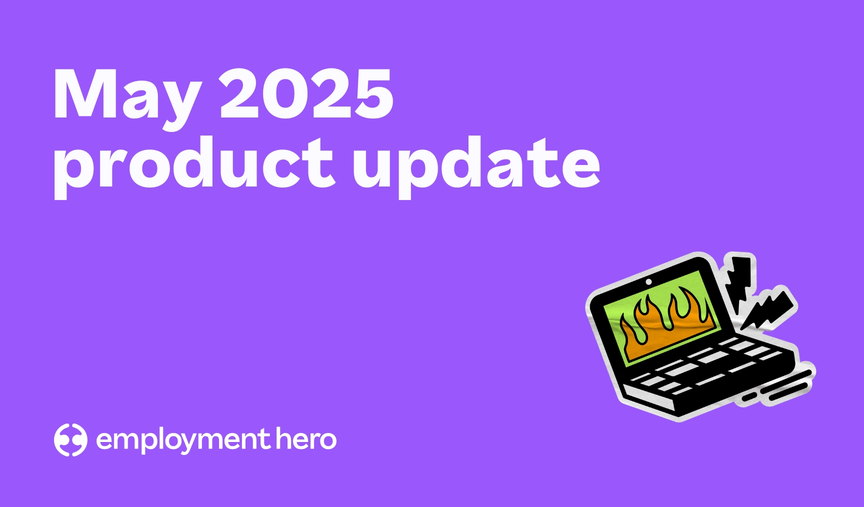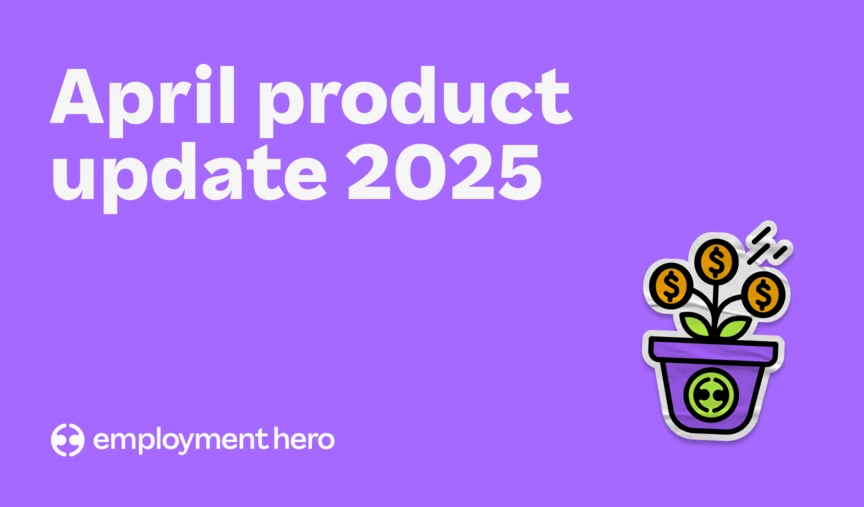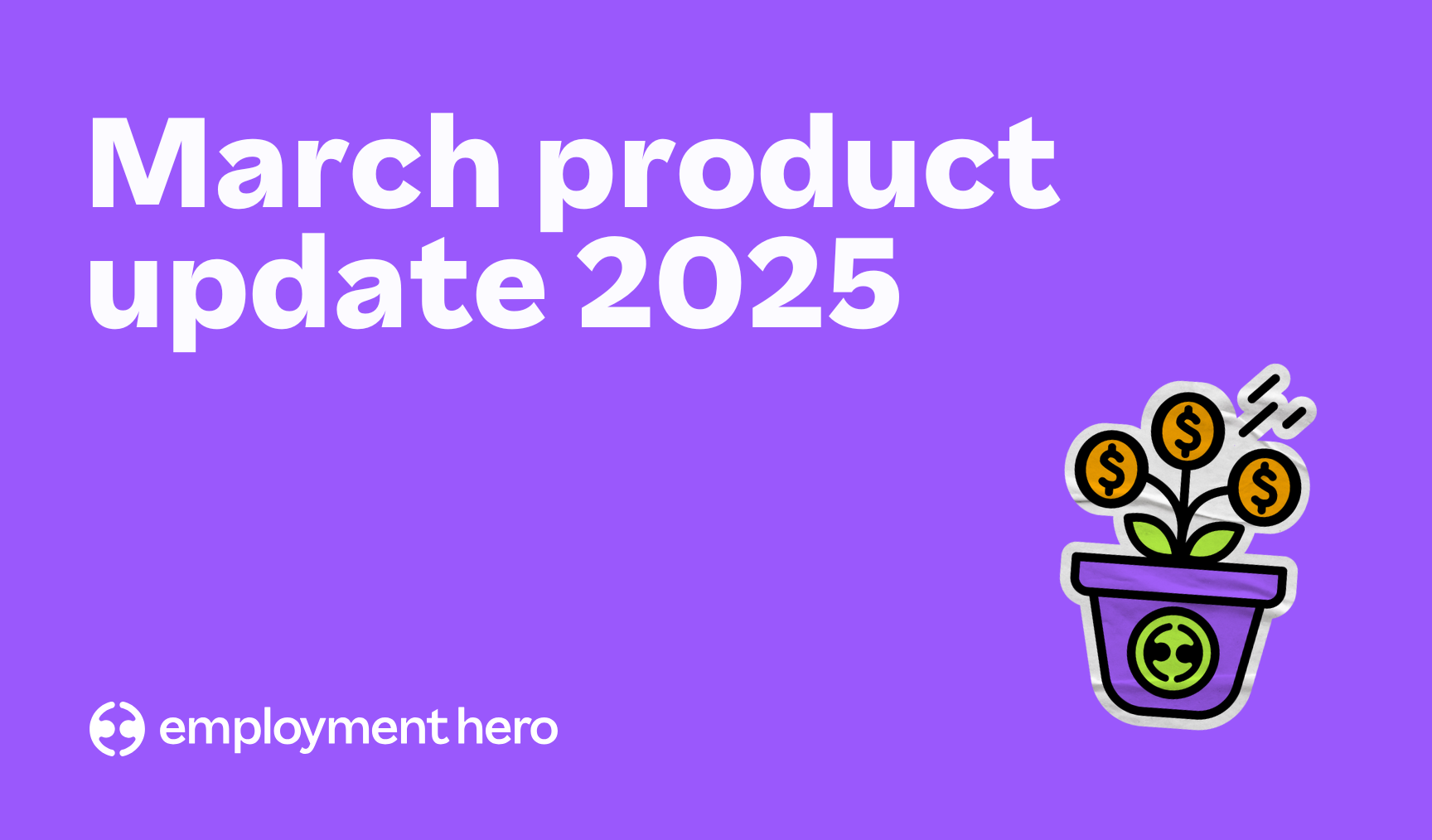12 employer branding strategies to attract top talent
Let’s dive in to what and how important employer branding is, as well as some actionable advice for you to start implementing today.

Contents
As a business, you spend significant time and investment in creating a compelling brand story around your products or services. The goal here, of course, is to attract and retain loyal customers.
And while looking after the interests and needs of your consumers is important, how long do you spend cultivating an attractive employer brand for your current and future employees?
If your goal is to entice job seekers and retain top talent, it’s important to recognise the value of building a strong brand image.
What is employer branding?
In its most simplified form, employer branding is your company’s reputation. It’s how both the industry and your employees perceive you as an employer.
Employer branding is really about how your business markets itself to prospective talent and your own employees. If you’d like a more ‘official’ definition, The Society of Human Resource Management defines employer brand as;
“An important part of the employee value proposition and is essentially what the organisation communicates as its identity to both potential and current employees. It encompasses an organisation’s mission, values, culture and personality. A positive employer brand communicates that the organisation is a good employer and a great place to work. Employer brand affects recruitment of new employees, retention and engagement of current employees, and the overall perception of the organisation in the market.”
Now that we know what it is, the next question is whether employer branding is worth investing in. We get it, keeping up with the day-to-day of business is hard enough. So, will shifting energy into developing your employer brand pay dividends?
Key points:
- A strong employer brand positively impacts recruitment, retention, engagement and market perception, ensuring a company’s bottom-line success.
- Today, a company’s reputation is often deemed more crucial than its products or services.
- Good employer branding goes beyond storytelling; it requires actions that reflect the company’s values and culture.
- Small and medium businesses can develop effective employer branding strategies without huge budgets or global name recognition.
- Craft a compelling Employee Value Proposition (EVP) and use the strategies below to improve your employer branding.
Why is employer branding important for employers?
Nowadays, a company’s reputation is considered more important than its actual product or service.
The stronger your employer brand is, the more likely you’ll be able to attract and retain highly qualified and experienced candidates.
Ultimately, good employer branding is about creating a strong business. The people who join your business and how they operate together are one of the business levers that you have to create success.
If you want to articulate your company’s leadership, values and workplace culture, you need to cultivate a compelling story.
That being said, employer branding goes deeper than storytelling, it’s about putting words into action that show jobseekers why your company is such an awesome place to work.
Are employer branding campaigns worth it?
We get that you might be sitting there wondering, is this really that important? Do I really need a strong employer brand? Well, the simple answer is yes.
Having an employer brand is vital to your company’s bottom-line results. To drive your business forward with prospective employees, you need to show the world why your company is a great place to work.
From compensation and benefits packages to learning and development and weekly happy hours, the culture within your organisation and how you treat your employees are all determining factors for future job candidates.
Without effective employer branding, you are missing out on quality applicants because of their perception of your company.
Can small businesses develop employer branding strategies?
Small to medium businesses have several key advantages when it comes to employer branding. As a fast-growing business, you have greater flexibility to play around with different employer branding strategies until you find the ones that stick.
The good news is, you don’t need an enormous budget and the same name recognition as Google to build a strong brand image.
How to build an employer brand strategy
If you’re starting with a blank page, the first question you need to address is the ‘why’.
Why do your people come to work every day? Why do they enjoy being there?
Look at your top performers and ask yourself, why are they so successful?
Go and ask your people and your managers these questions. You’ll be surprised how quickly common themes emerge. These themes are the basis of your employer branding strategy.
Now you need to articulate this into an employee value proposition. This will tell you the type of people you want to attract to the business, what matters to them and how the business delivers on those needs for them.
This leads to our first step in the employer branding strategy.
1. Define your employee value proposition (EVP)

Defining your EVP means defining your ‘why’. Think of your EVP as your elevator pitch to attract new talent.
What attracts and retains your talent, and what is your company’s promise to its people? Your employee value proposition (EVP) is the foundation for your employer brand.
A captivating EVP will help your business stand out in a crowded and competitive market.
Your EVP should include elements such as rewards and recognition, career development, working arrangements and workplace culture. These are the perks and benefits that should be included in your job advertisements, to attract job candidates to apply for the position.
If you’re not sure of your EVP, send around a survey to all of your current employees. You can ask them what they like about working at your company. Do they love the snacks in the kitchen, the career progression opportunities, the continual education or all of the above?
Use the answers from this exercise as your EVP because if your current employees see value in these things, chances are other top candidates will see it too!
At Employment Hero, our EVP is posted on all of our job ads and website careers page.
For example, our EVP consists of:
- Remote-first and flexible working arrangements
- A generous budget to spend on setting up your home office (if you need a desk, chair, or screen? We’ve got you covered!)
- We set you up for success with the latest and greatest hardware, tools and tech
- Learning and development (including an external study policy, live monthly professional development classrooms, and premium online learning content!)
- Reward and recognition programs – because great work should be recognised and rewarded
- Including Lightning Award for delivering quality work at speed and Values Champion Awards
- Swag app cashback offers and discounts on hundreds of your favourite brands and products
- Self, health, wealth and happiness programs
- Social events and team celebrations
- Employee Share Option Program: be an owner of Employment Hero
- Annual Global Gathering to get to know your global colleagues – so far we’ve been to Thailand, Vietnam and are excited to meet in Bali in September 2024
Remember, an EVP is essentially a promise to your people so it must be truthful and clearly articulated to current and future employees. It’s about showcasing the additional perks and benefits that make your company stand out from the rest.
Pro tip: Use a recruitment software to save resources and automate job postings.
2. Ask your marketing team for help
Once you have your proposition, you need to think about where is the best place to connect with the people that you want to attract.
This will help you determine what channels you should be using, and also what stories make sense for you to tell people to develop your employer brand.
Your marketing team are pros when it comes to creating engaging content. So it’s important that you take the opportunity to harness their skills and expertise.
With the right recruitment marketing strategies put in place, your marketing team can take your employer branding to the next level.
3. Review the candidate experience
Before you dive into creating a shiny new employer branding strategy, we suggest running an employer brand audit by reviewing your current candidate experience and jotting down some numbers.
These can include metrics such as time to fill roles or the number of applicants. You could even ask your newest recruits a few questions to gain a better understanding of their experience.
By doing this, you’ll be able to set a benchmark of the employer branding efforts you’re currently doing, whilst identifying opportunities where you can take it to the next level.
According to research from SHL, two in five candidates decline job offers as a direct result of a bad interview experience. With numbers like this, it’s crucial to get your candidate experience right, or run the risk of having top talent walk straight out of the interview and disappear for good.
Did you know our applicant tracking system can automate hiring and improve your candidate experience? Get in touch to find out more today.
4. Make onboarding an experience to remember
Onboarding is the first experience any new hire will have with your company, so having a well thought out program can help leave a lasting impression.
Building a strong brand image ultimately starts with onboarding. It’s vital you get your new employees engaged and excited from the get go to ensure smoother transition periods, reduced turnover and more collaborative teams.
Equipping recruits with the necessary tools and resources to succeed in their roles can help build a more supportive company culture, while effectively preparing them to hit the ground running.
5. Jump on social media to showcase your company’s culture

Many job seekers take to social media to gain direct insight into a company’s personality and culture. Social media doesn’t just have to be about engaging with your customers, it can also be used to help build your employer brand and visualise your brand’s image.
With more and more people using social media in their job search, it’s important you use it to highlight your EVP.
Whether it’s posting a picture of the cute cat at the office, birthday celebrations or quarterly events, they should all be uploaded to your company’s social media accounts.
Not only does it show your employer branding, it also provides potential candidates with a good idea of your company values and overall vibe.
If you’re concerned about not looking professional to your customers, don’t be! Showcasing the people behind the brand will always be in style.
6. Use multiple channels to tell your employer brand story
When marketing a product or service, you don’t just use one channel to communicate your offering and brand message.
Instead, you should leverage an array of different platforms like social media, email, blogs, video channels and other forms of messaging to ensure you’re connecting with the largest audience possible.
The same rules apply when it comes to your people. If you want to clearly articulate your employer brand, you’ve got to consider all the different ways you can reach your employees and potential job candidates.
7. Switch up media formats and use a mix of photos, videos and blog posts
When creating your employer branding strategy, it can be easy to fall into the habit of posting the same content. To avoid this, you’ll need to be creative with the media you use.
If you don’t consider yourself a designer, talk to your marketing team.
They can assist you with making your dream content a reality! If not, use your phone and do it yourself. At the end of the day, it’s all engaging content that people want to see!
Some examples include:
- Having an ‘about our team’ page on your website
- Asking some of your team to respond to a list of questions to collate for a blog post
- Interviewing your team to provide insight into what it’s like working at your company and posting it as a video
8. Leverage existing employees
Motivated, engaged and satisfied employees are your strongest brand advocates. If jobseekers want to learn more about your employer brand, they’re more than likely to reach out to your company’s employees to get a feel of how it might be working for your company.
Leverage your workforce through employee interviews and testimonials that can be displayed on your website. You can also ask your team to use their social media accounts to help bolster your company’s reputation online.
For example, if you’ve recently hosted a giveaway event or expert panel discussion, your employees could post on their Facebook, Instagram, TikTok, LinkedIn or X (Twitter) feeds using company-related hashtags.
This is a simple yet effective way for your employees to highlight your employer brand proposition within their own circle.
Read more: Why employee referral programs work well
9. Offer learning and development opportunities
By providing training and growth opportunities to your employees, you communicate your company’s commitment to ongoing learning and professional development.
Let’s not forget – as your employees develop their skills, the whole organisation benefits, so it’s a win-win situation for everybody! Consider offering special certifications, leadership training, personal interest courses and plenty of avenues for career advancement.
Investing in learning and development has been proven to help capture top talent and retain your employees. You can even utilise a learning management system to provide them with the option to engage in self-paced learning.
10. Commit to building a diverse and inclusive organisation
There’s no doubt that diversity and inclusion (D&I) has become one of the most popular HR buzzwords in recent times. The reason being, D&I leads to a greater diversity of thought.
So when a group of people from various different backgrounds, perspectives and experiences are working together, they’re able to bounce off one another’s differences to produce more innovative ideas.
If you want to strengthen your employer brand, making a wholehearted commitment to building a diverse and inclusive workforce is a surefire way to show your employees that you value their uniqueness.
In sunny Malaysia, we’re a melting pot of cultures – embracing diversity brings not just fresh perspectives, but also helps your organisation relate with Malaysians as a whole.
Implementing strong D&I initiatives ensures your brand is reflective of both your customers and employees. This not only speaks volumes to jobseekers but helps to extend your brand’s reach to new groups of people.
11. Start a company blog
Quality content — and lots of it, is an effective low-cost strategy to attract and engage audiences in today’s highly competitive landscape.
While your customers might refer to your blog for advice on complex business problems, jobseekers, on the other hand, may use it to connect with your business on a more personal level. A blog acts as a window to your company’s style and tone of voice.
It can also be used to highlight company news, updates and articles written by employees or leaders, which gives a more personable touch to your content. For job candidates, this is incredibly important in determining whether your company is the right fit.
12. Optimise your website’s career page
Your company’s career page is a core component of your company brand. It gives you a chance to broadcast your unique company culture and what it affords to future prospects.
Consistency is key in building an in-depth career page. It’s important to check and double-check that your message is consistent and your employee value proposition is clearly defined.
Your dedicated careers space should aim to include any key growth metrics and company achievements, employee stories and testimonials, your mission, vision and values, as well as an overview of the benefits packages provided.
Be sure to include some fun visuals alongside these elements to make the page more engaging for readers.
How can you improve your employer brand?

If you’ve already got a strong employer brand – great! But are you measuring its impact?
One of the most common mistakes that people make is forgetting to measure how their employer brand is performing. A really good direct goal is increasing the number of organically sourced candidates or hires, or improving employee happiness (by using a cloud-based HR system like Employment Hero).
The other common mistake is not making employer branding a continued focus. How often, after a role has been vacant for a month, does someone say, “Quick! Let’s do something on social media to show how great it is to work here and include a “We’re Hiring” banner on it”?
If you want to build a real and sustainable employer brand to boost your competitive advantage, you need to develop a constant stream of relevant, quality content.
This content should show people what it’s like to work with your team, how you celebrate success and how you’re growing so that people feel both inspired by and involved in your company’s story.
How do you measure the success of employer branding strategy?
While the success of employer branding campaigns depends on the business goals, the data from job postings can be a good place to start.
Employer brand metrics can include:
- Employee turnover
- Quality of jobseekers
- Hiring costs
- Number of job applicants
- Reviews on Indeed or Glassdoor
- Number of employee referrals
- Increased traffic to the careers website
The wrap up
Having a well-defined and easily identifiable employer brand is no longer considered a business luxury—it’s now an absolute must to attract and retain employees.
But building a strong employer brand requires patience. These things don’t just happen overnight. As they say, sikit-sikit lama-lama jadi bukit.
By implementing these cost-effective branding strategies, you’re well on your way to building an attractive brand image that’ll help engage and inspire your people.
Download our recruitment and hiring guide today.
Related Resources
-
 Read more: Product Update: May 2025
Read more: Product Update: May 2025Product Update: May 2025
Follow our May 2025 product update as we share all of the latest and greatest features we’ve released over the…
-
 Read more: Product Update: April 2025
Read more: Product Update: April 2025Product Update: April 2025
Follow our April 2025 product update as we share all of the latest and greatest features we’ve released over the…
-
 Read more: Product Update: March 2025
Read more: Product Update: March 2025Product Update: March 2025
Follow our March 2025 product update as we share all of the latest and greatest features we’ve released over the…








